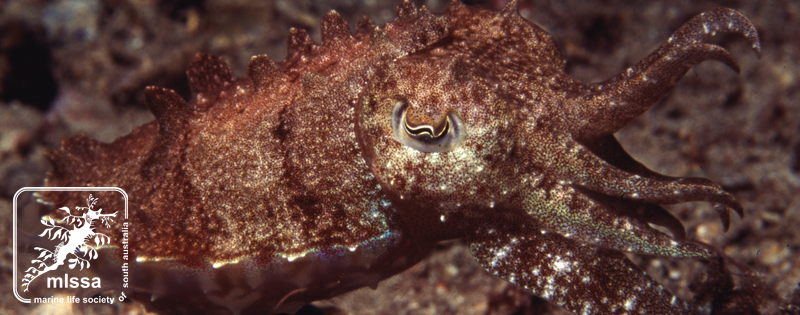(As told to Steve Reynolds by Phil Porter)
Phil Porter from Port Lincoln recently became a new MLSSA member. Phil said that he has been diving in the Port Lincoln area for many years. He did a FAUI scuba course in 1981, and has been into photography since that time.
“My main interest has always been the incredible local marine life, and I had built up a great collection of hundreds of photos of both fish and invertebrates. Unfortunately, I lost the lot in the 2005 bushfires, along with my diving gear. I haven’t done any scuba diving since then, but intend to get back into it, as my daughter, 13, is very keen and wants to become a marine biologist”, Phil said.
“I still do quite a lot of snorkelling, but haven’t as yet got back into SCUBA. Hopefully I will soon though. My daughter wanting to learn SCUBA might just give me the incentive I need!” he said.
He went on to say, “I have just read with interest the article in the 2007 journal regarding cuttlefish attacks on divers (http://www.mlssa.asn.au/journals/2007Journal.htm). I had an encounter with a large cuttlefish many years ago while diving on a shipwreck just north of here. I’m pretty certain it happened just after Easter. We had been planning to dive the wreck of an old fishing trawler, the Narracoopa, about 20km north of Port Lincoln over the Easter weekend.”
(The Narracoopa was a 294-ton wooden tuna boat built in 1940 and she sank on 25/6/1968 at Cape Bolingbroke (Spencer Gulf) after she burnt due to an explosion in her engine room.)
“The weather was against us that weekend, but we dived there shortly afterwards, maybe only a week or two later on. This is when the cuttlefish ‘attack’ happened. Does this fit in with other attacks time wise?”
(My 2007 Journal article titled “Cuttlefish Attacks On Divers” suggested that autumn appeared to be the danger period when it comes to the possibility of cuttlefish attacking SA divers. One or two weeks after Easter certainly falls within autumn, March to May.)
“We were diving from a boat in about 20 metres of water. I saw the cuttlefish sitting among the wreck and went in close for a photo. It suddenly rushed out and grabbed the camera, hanging on for several moments. It let go then retreated a little way, before suddenly deciding it wanted more. It again attacked the camera, almost ripping it from my hands. I thought it was probably getting upset because it was able to see its own reflection in the camera lens (it was an SLR in a housing with a large glass lens in front), but after letting go and retreating the second time, it swam back out and attacked my friend who was swimming slowly past. He pushed it away with his fins, and we both swam off, leaving it in peace. Toward the end of the dive, however, it again attacked us as we swam past it, heading back toward the anchor rope. It grabbed my friend’s arm, but didn’t bite. After pushing it away, it went back among the wreck and sat watching us until we retreated.”
“This is the only time I have ever witnessed aggressive behavior from a cuttlefish, though I have been very close to them many times.” Phil said.
He added, “If any of your members are coming over this way at any time, please look me up. I would love to advise on good dive spots, and maybe go out on a dive or two. In this area we have a huge diversity of life, because of the varying habitats. Port Lincoln sits right where the shallower, sheltered waters of Spencer Gulf meet the deeper oceanic waters of the south; hence we tend to get a great mixture of species.”

